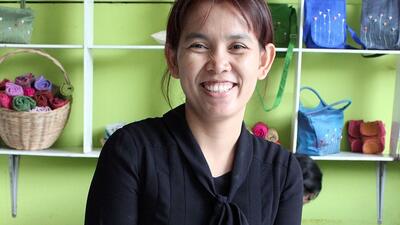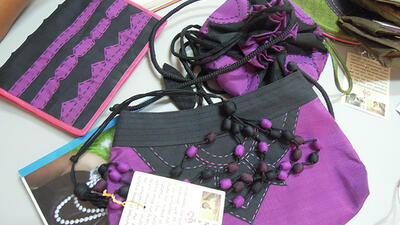Healing the wounds of war: From conflict to commercial conservation in Cambodia
A small miracle was recorded on Cambodia’s northern plains in 2009. Deep in the forest, not too far from the ancient temples of Angkor Wat, the number of giant ibis, a critically endangered species, had jumped. Nick Butler, coordinator of the Sam Veasna Centre (SVC) for wildlife conservation, puts this miracle down to a six-year partnership between the Wildlife Conservation Society (WCS), SVC, and the 220 empowered families of Tmatboey village.
In the late 1990s, shortly after three decades of civil war ended in Cambodia, WCS discovered that the unique habitat of the northern plains was a last refuge for 15 globally threatened bird species – including Asian vultures and Cambodia’s national bird, the giant ibis. ‘The birding world is a tight-knit community,’ Mr. Butler says, and news of the discovery spread fast. WCS was suddenly inundated with requests from enthusiasts to see the birds, so they decided to turn this interest into an incentive for local people to conserve their environment.
Tmatboey is a collection of wooden houses in a forest clearing – and one of the best places on Earth to see giant and white-shouldered ibis. But the war had left Cambodia poverty stricken and local people were more concerned about their daily survival. Without any immediate income opportunities, they relied on rice cultivation and poaching for food.
‘At first the villagers did not understand why tourists would want to see the birds,’ Mr. Butler says. But as the steady flow of people continued, they became more interested in the WCS ecotourism idea. At that point the community took a leadership role, Mr. Butler explains. The village elected their own ecotourism committee, which built and runs a lodge, and manages locals responsible for working with tourists. ‘By doing that, they avoided a lot of jealousy that has happened at other sites in Cambodia,’ he says. WCS stayed involved and continues to provide regular advice.
Tourism is Cambodia’s second largest industry but few visitors venture off the beaten track due to the lack of infrastructure and marketing. Places like the northern plains see few benefits of this industry and despite being close to major attractions, like Angkor Wat, people here are among the poorest in the country. Tmatboey demonstrated how, by empowering communities and having a good business model and marketing plan, this can change.
From the outset, WCS was business-like in its approach and Mr. Butler believes this is another key to the ecotourism success at Tmatboey. In 2006, WCS handed over the logistics, marketing, training of guides and local tourism service providers to SVC. A team from Berkley University wrote a five-year business and marketing plan for the Centre. ‘The key strategy was to focus on bird watchers, because they were a defined group that had shown an interest even before the opportunity was advertised.’
Since 2006 the village has seen a steady increase in visitors. In 2011, 540 people came to catch a glimpse of the giant ibis and the other rare birds. The community has earned US$ 13,000 so far this year. ‘That’s a small fortune for a village that didn’t have a cash economy before,’ Mr. Butler says.
SVC is now looking to replicate Tmatboey’s success at eight other sites.









